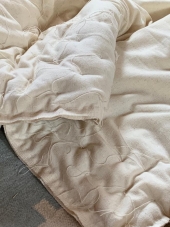
 6
6




 7
7




The wishbone never could replace the backbone.
 2
2




 4
4




 4
4




The wishbone never could replace the backbone.
 5
5




 4
4




Dado
 2
2





 1
1




Lito George wrote:A ton of very useful input here folks. I wanted to let you all know I'm processing this good stuff, and will revert properly in due course. Thank you for making my brain work
 3
3




Lito George wrote:
Lito George wrote:OK onto serious stuff: where does one recycle machines? (Parts are very very difficult to come by). Thanks folks.
Update: the internet is singledhandedly the most useful medium in use today for information dissemination. Thats my dissertation. Amen.
No need to recycle. The Janome lady couldn't organise ice in the Antarctic (or else she was having me on from the beginning), so I am stuck (gratefully) with the Singer.
I found through a variety of sources (Ebay/Amazon), USA based shops and local shops that if I bought the parts from brick and mortar shops, the price would be....4x higher than if I bought from Amazon.
I also found the self same parts on Ebay at half the Amazon cost. Cheap as chips, I have bought two full sets of replacement gears and this makes me feel good to be reusing the machine as best as possible and if I have to pass it on one day, then I'll give the next owner the best chance of keeping it running well into the century.
Maintenance tomorrow (perhaps) and I'll start to provide feedback once the machine is up and running. New skillset: becoming a sewing machine tech. lolz....
 1
1




 4
4




New location. Zone 6b, acid soil, 30+ inches of water per year.
https://growingmodernlandraces.thinkific.com/?ref=b1de16
Growingmodernlandraces.com affiliate
 1
1









Lito George wrote:Thank you Lauren,
Your Sherlock Holmes hat was fitting perfectly well with that post of yours. The bobbin thread is indeed not catching. So very frustrating at the same time - I'm itching just to have a few stitches go my way ya know?
I'm going to watch some discovered in depth tutorials on thread tension and then find someone who can educate me why the bobbin thread isn't doing its thing. Makes sense now why the original bobbin has been cut with a knife (apparently) and why I had to use a ginger technique in smoothing it all down so that nothing could catch.
I am guessing this machine was neglected or simply never worked well, sat in the basement for a few decades, then was rediscovered after the GrandMa deceased.
I appreciate your feedback and interest and encouragement - its very helpful
 1
1




New location. Zone 6b, acid soil, 30+ inches of water per year.
https://growingmodernlandraces.thinkific.com/?ref=b1de16
Growingmodernlandraces.com affiliate
 4
4












 6
6




 4
4




Victoire Peverill wrote:Oh I love quilting! It's a great way to start making things out of fabric. There is a lot of expensive gear and fancy technique in the quilting world, but the way I do it is easier. As a beginner, I would strongly recommend doing it by hand. While it seems slower, the trouble with a machine is that you make mistakes faster! Working by hand, your hands get to feel what you're doing and you learn that way too. I think handmade quilts look better too!
Trying to achieve self-reliance on a tiny suburban plot: http://gardenofgaladriel.blogspot.com
 1
1




Victoire Peverill wrote:Oh I love quilting! It's a great way to start making things out of fabric. .
 3
3




![Filename: rag-quilt-tutorial_072114_0106.jpg
Description: [Thumbnail for rag-quilt-tutorial_072114_0106.jpg]](/t/116150/a/95445/rag-quilt-tutorial_072114_0106.jpg)








 1
1




 3
3







 2
2




 2
2




Dado
 3
3





Gardens in my mind never need water
Castles in the air never have a wet basement
Well made buildings are fractal -- equally intelligent design at every level of detail.
Bright sparks remind others that they too can dance
What I am looking for is looking for me too!









Gardens in my mind never need water
Castles in the air never have a wet basement
Well made buildings are fractal -- equally intelligent design at every level of detail.
Bright sparks remind others that they too can dance
What I am looking for is looking for me too!

 2
2




 2
2




 1
1





|
this tiny ad is trying to guide you away from the dark side!
permaculture and gardener gifts (stocking stuffers?)
https://permies.com/wiki/permaculture-gifts-stocking-stuffers
|







